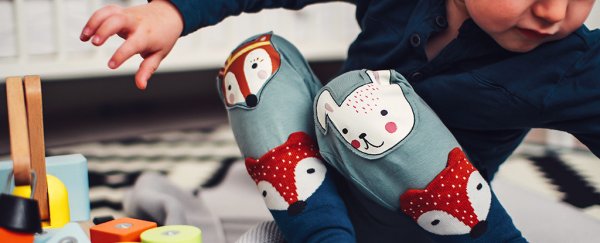If you want to get toddlers focussing better and playing more creatively, maybe think about giving them fewer toys to play with: those are the conclusions of new research into how young children respond to their playthings.
Kids given fewer toys had longer play sessions and used the toys more creatively, the study found, which might give us clues on how to promote healthy habits at home and school.
The researchers from the University of Toledo in Ohio ran two experiments with each of the children, one with 4 toys and one with 16 toys, when they were allowed supervised free play periods for up to 30 minutes each time.
"When provided with fewer toys in the environment, toddlers engage in longer periods of play with a single toy, allowing better focus to explore and play more creatively," write the researchers in their published paper.
"This can be offered as a recommendation in many natural environments to support children's development and promote healthy play."
There was a "significant difference" in how the toddlers reacted when there were fewer toys around, the researchers said. They showed greater variety in the ways they used the toys, and they switched between them less frequently.
On average, the kids interacted with 8.6 of the available toys when they had 16 to pick from, and 3.1 of the available toys when they had to choose from 4.
The experiments only involved 36 toddlers overall, aged between 18 and 30 months - that's one of the limitations of the study to bear in mind before we make any sweeping statements about the optimum number of toys for our kids.
Another limitation the researchers acknowledge is that having more toys available may have naturally led to the toddlers swapping toys more often, as they would be keen to explore their environment and feel safe in it.
Nevertheless, with the other two variables factored in – the duration of time spent with each toy, and the different ways each toy was used – it does suggest that the kids were having a more focussed and creative playtime with fewer toys.
It also backs up previous research from the team at the University of Toledo that found kids got more creative with less of a choice.
The researchers note that estimates of how many toys the 36 toddlers had at home averaged out at over 90, and while they're unlikely to be all out on the floor at the same time, making sure only a few are available at once could be beneficial to kids.
One hypothesis is that it could encourage children to be more imaginative with the toys they have, suggests the team behind the study; another is that it's good for the kids' attention spans to not be always swapping from toy to toy.
A lot more research is going to be needed before we can fully understand how an abundance of toys can affect playtimes and toddler development, but it's something to think about while you're planning Christmas shopping for the youngsters.
The researchers say that even those who already have a lot of toys at home can be encouraged to limit the available choice.
"When there is an abundance of toys, small collections can be rotated into play while the majority is stored away, providing opportunities for novelty without creating the distraction posed by having too many toys available," conclude the researchers.
The findings have been published in Infant Behaviour and Development.
